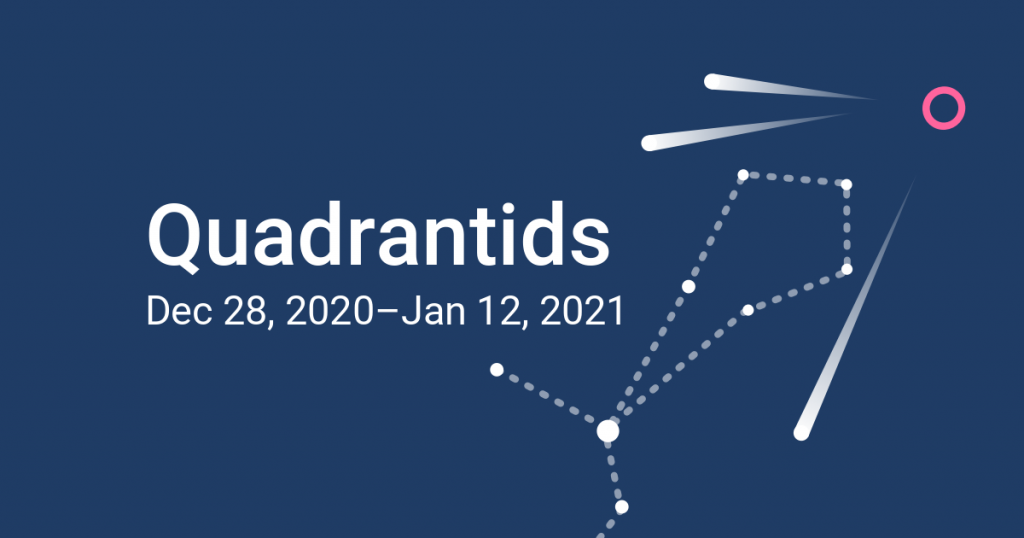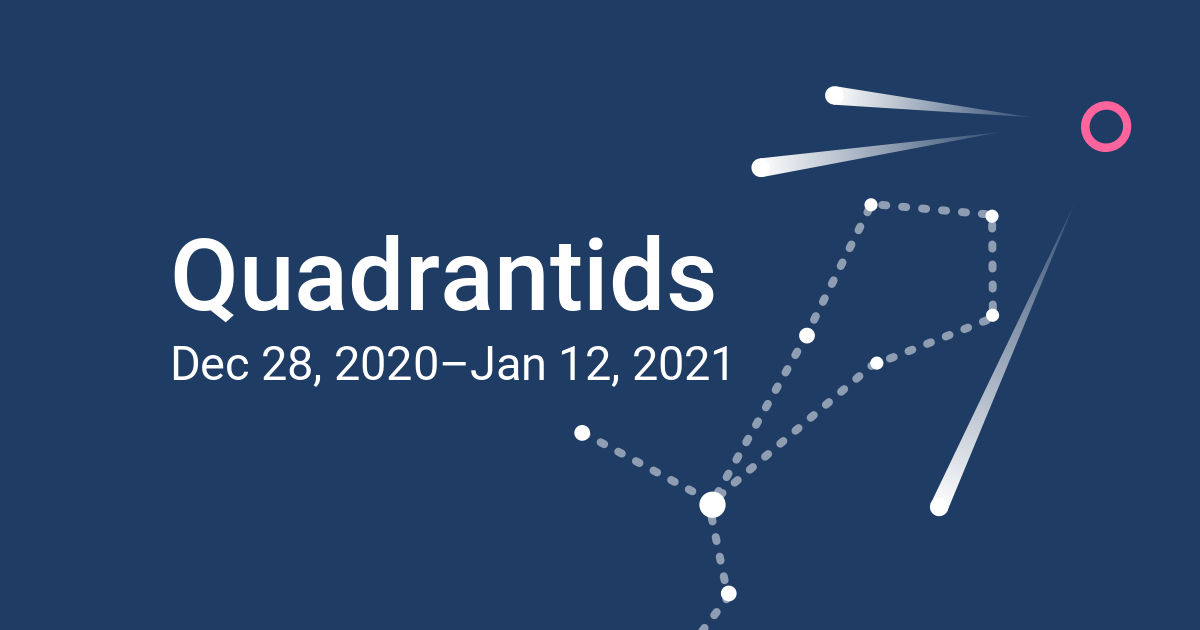2021 is starting off strong with the peak of the Quadrantid meteor shower, which NASA calls one of the “best annual meteor showers,” from January 2nd into January 4th.
The Quadrantids return each year between December 28th and January 12th. First seen in 1825, they originate from the small asteroid 1003 EH1, which was discovered in March 2003 by the Lowell Observatory Near-Earth Object Search.
During the brief window from Saturday night into Sunday morning, there is a chance to spot between 60 to 200 meteors per hour traveling at 25.5 miles per second. Quadrantids are known for bright fireball meteors, which are larger explosions of light and color that last longer than the typical meteor streak.
Despite the shower’s potential, it will be brief: the window of maximum activity is just six hours.
Best in the Northern Hemisphere Quadrantids are best viewed in the Northern Hemisphere (this shower can also be seen at latitudes north of 51 degrees south) at night and before sunrise. On the night of January 2nd, the moon will be 84.41% full.
Serious observers should watch for at least an hour as numerous peaks and valleys of activity will occur. If you only few for a short time it may coincide with a lull of activity. Watching for at least an hour guarantees you will get to see the best this display has to offer. The serious observer is also encouraged to fill out a visual observing form on the website of the International Meteor Organization located at: https://www.imo.net/members/imo_registration/register/ . You must register to use the form but this is free.



